Introduction
Conducting a SWOT analysis is a transformative strategy for businesses to identify their competitive edge and areas for improvement. By recognizing weaknesses and addressing them, companies can navigate the business landscape with precision, ensuring they are well-equipped to capitalize on opportunities and sidestep potential threats. In this article, we will explore the importance of understanding weaknesses in SWOT analysis, provide examples of weaknesses across different industries, discuss strategies to identify weaknesses, examine case studies of businesses overcoming weaknesses, and highlight internal and external measures to strengthen weak areas.
Furthermore, we will delve into leveraging external opportunities to offset weaknesses and creating an action plan to address weaknesses. Lastly, we will explore common pitfalls in SWOT analysis and how to avoid them. By following these practical insights, businesses can transform their weaknesses into strengths and foster growth and resilience.
Understanding Weaknesses in SWOT Analysis
Performing a SWOT analysis is a transformative approach to identifying a company's competitive advantage and areas for improvement. Identifying areas for improvement, such as outdated technologies, skill gaps, or inefficient procedures, is crucial for guiding an organization towards progress. With a thorough SWOT analysis, companies draw from internal metrics like financial records and employee feedback, alongside external data encompassing industry trends, to uncover these vulnerabilities. This comprehensive approach not only reveals the current difficulties but also aids in shaping strong strategies to enhance the organization's position in its sector. By utilizing advantages and tackling limitations, companies can maneuver through the corporate environment with accuracy, ensuring they are well-prepared to take advantage of possibilities and avoid potential dangers.
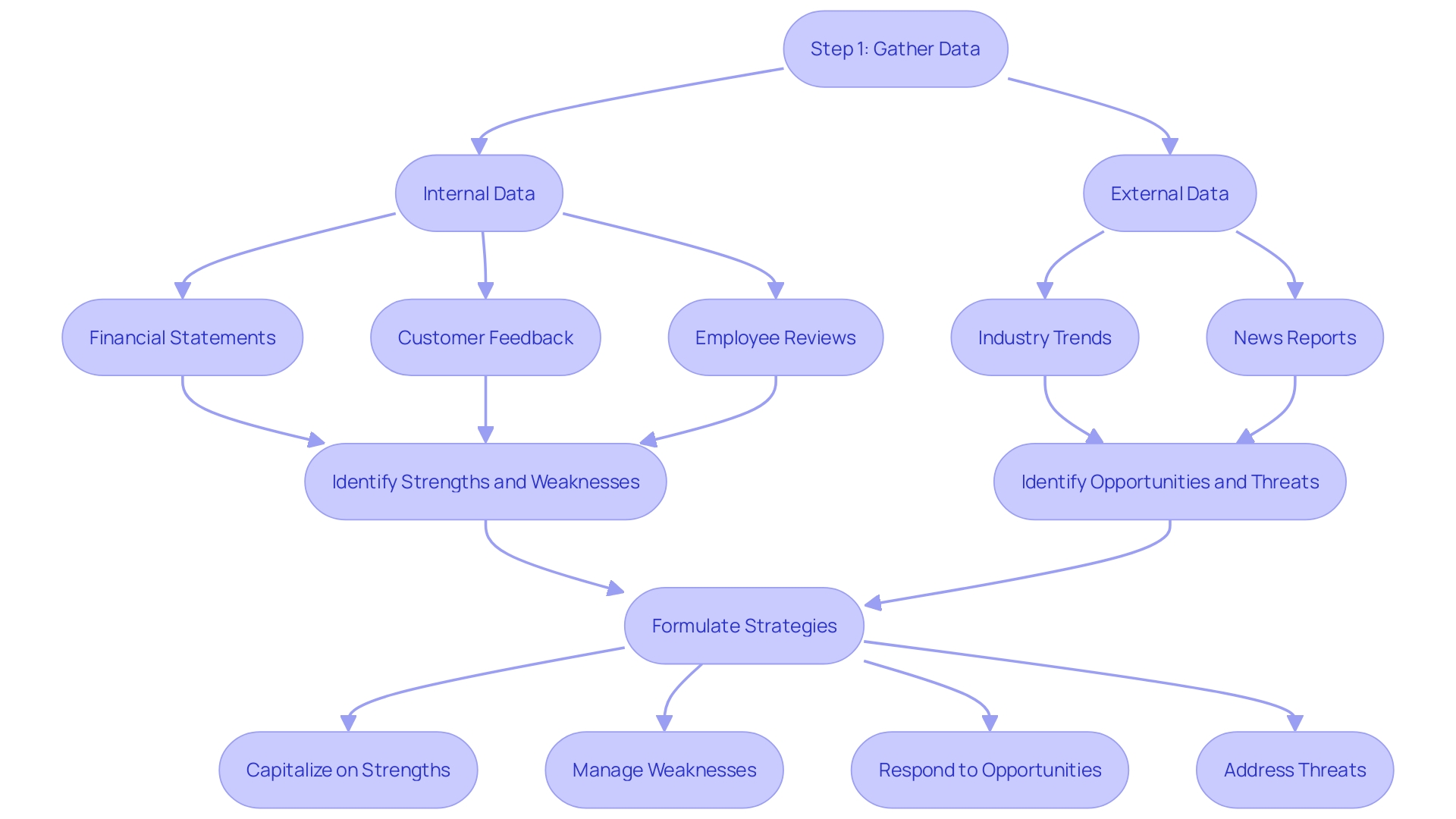
Examples of Business Weaknesses Across Different Industries
Recognizing and dealing with weaknesses in enterprises necessitates a profound comprehension of the distinct obstacles encountered by various sectors. For instance, retail companies often grapple with high employee turnover and outdated inventory management systems. Bemol, a Brazilian retail chain, overcame extreme logistical difficulties by implementing a robust network infrastructure for their operations in remote Amazon locations, even offering free public WI-Fi to customers in isolated areas. Similarly, manufacturing firms might struggle with the lack of automation and supply chain inefficiencies, while those in technology face the hurdle of outdated software and cybersecurity vulnerabilities.
Healthcare organizations, such as Everyplace Labs, tackled inefficiencies by inventing automated diagnostic kiosks for rapid testing, streamlining processes, and reducing the risk of human error. Retail advancements also include the checkout-free stores in Dublin Airport, revolutionizing the shopping experience with Zippin technology that allows passengers to purchase items swiftly without checkout lines, optimizing the customer experience and operational efficiency.
To effectively overcome these challenges, companies must study real-life examples and implement strategic enhancements customized to their industry-specific requirements. For example, understanding the high turnover rate in the restaurant industry, which stood at 6.1% as of November 2023, can guide establishments in creating better working conditions and adopting technologies that support staff well-being and career progression. Through the analysis of these examples and the implementation of targeted strategies, organizations can transform their weaknesses into strengths and nurture growth and resilience.
Strategies to Identify Business Weaknesses
To effectively pinpoint areas for enhancement and understand where your business may be lagging, consider the following actionable strategies:
- Regular internal audits enable a comprehensive review of operations, processes, and financial health, revealing inefficiencies and areas in need of improvement.
- Customer feedback, including complaints and suggestions, is a goldmine for identifying shortcomings in your products, services, or overall customer experience.
- Benchmarking against industry leaders helps to highlight performance gaps and areas where the company needs to catch up or innovate.
- Employee input is invaluable for uncovering weaknesses in processes, communication, or skill sets that could be hindering your company's performance.
For instance, Toyota's Woven Planet initiative, despite a visionary approach, stumbled due to execution issues. Projects like building a prototype city for testing autonomous technology or creating a unifying operating system for cars demonstrate the complexity and risks involved in ambitious ventures. These examples emphasize the importance of not only having a thorough case but also an organized process for change management, as evidenced by failed mergers and acquisitions that overlooked the necessary integration strategies.
Moreover, comprehending market trends and consumer behaviors can offer insight into future profitability and potential shifts in demand, enabling enterprises to adjust and discover opportunities for expansion. Utilizing extensive market research and competitive analysis will guarantee that your approaches are data-driven and concentrated on areas with the highest return potential.
By implementing these strategies, organizations can systematically identify weaknesses and strengths, allowing them to create targeted plans for enhancement and sustainable expansion.
Case Studies: Overcoming Weaknesses in Various Business Sectors
Analyzing real-life examples shows how companies have tackled their weaknesses and utilized their advantages across different sectors. For instance:
-
Nets, a provider of digital payment solutions with over half a century of expertise, encountered a challenge in presenting technical data in an engaging manner. Through rethinking their data presentation, they created an interactive experience that promoted user engagement, illustrating the importance of innovative problem-solving in enhancing processes.
-
Stora Enso, a Finnish paper manufacturer with a storied history dating back to the 13th century, underwent a radical transformation. Recognizing the dwindling demand for paper products, they pivoted towards renewable materials, developing sustainable alternatives to traditional products. This strategic change not only rejuvenated their model but also positioned them at the forefront of the renewable materials sector.
-
In the retail sector, addressing shrinkage is paramount. Retailers are now employing advanced tactics like Electronic Article Surveillance (EAS) systems, comprehensive video surveillance, and source tagging to mitigate theft and ensure store safety. This approach underscores the necessity for retailers to adapt to contemporary challenges through the integration of technology and new security measures.
These examples highlight the significance of businesses identifying and effectively dealing with their areas for improvement, while at the same time leveraging their strengths to remain competitive and adaptive to market trends.
Internal Measures to Strengthen Weak Areas
Addressing internal weaknesses is a pivotal step in fortifying an organization's foundation for sustained success. A multipronged approach can be instrumental:
-
Training and development: Cultivating an environment of continuous learning is key. According to the 'Lean into Learning Report 2023', fostering a culture of skill development is crucial for team resilience and adapting to digital transformation. Providing employees with opportunities to enhance skills ensures they are equipped to meet current and future challenges.
-
Process improvement: It's essential to refine internal operations for efficiency. A principle to consider is the identification of 'weak signals'—anomalies in processes that could indicate more profound issues or opportunities for innovation. This preemptive scrutiny can lead to streamlined workflows and cost reductions.
-
Technology adoption: In the era of digital transformation, investing in technology is not optional but a necessity. The successful digital transition of TBC Bank exemplifies this, with a focus on reducing time-to-market for their digital products, thereby enhancing customer and employee experiences.
-
Financial management: Robust financial planning and management are the backbones of a healthy organization. Insights from the UK's Business Insights and Conditions Survey reveal the dynamism of financial performance, with 16% of businesses reporting increased exports and 13% reporting increased imports. An agile financial approach can help navigate such volatility and strengthen financial performance.
By incorporating these approaches, organizations can not just correct deficiencies but also unleash growth and innovation, establishing a path towards long-term success.
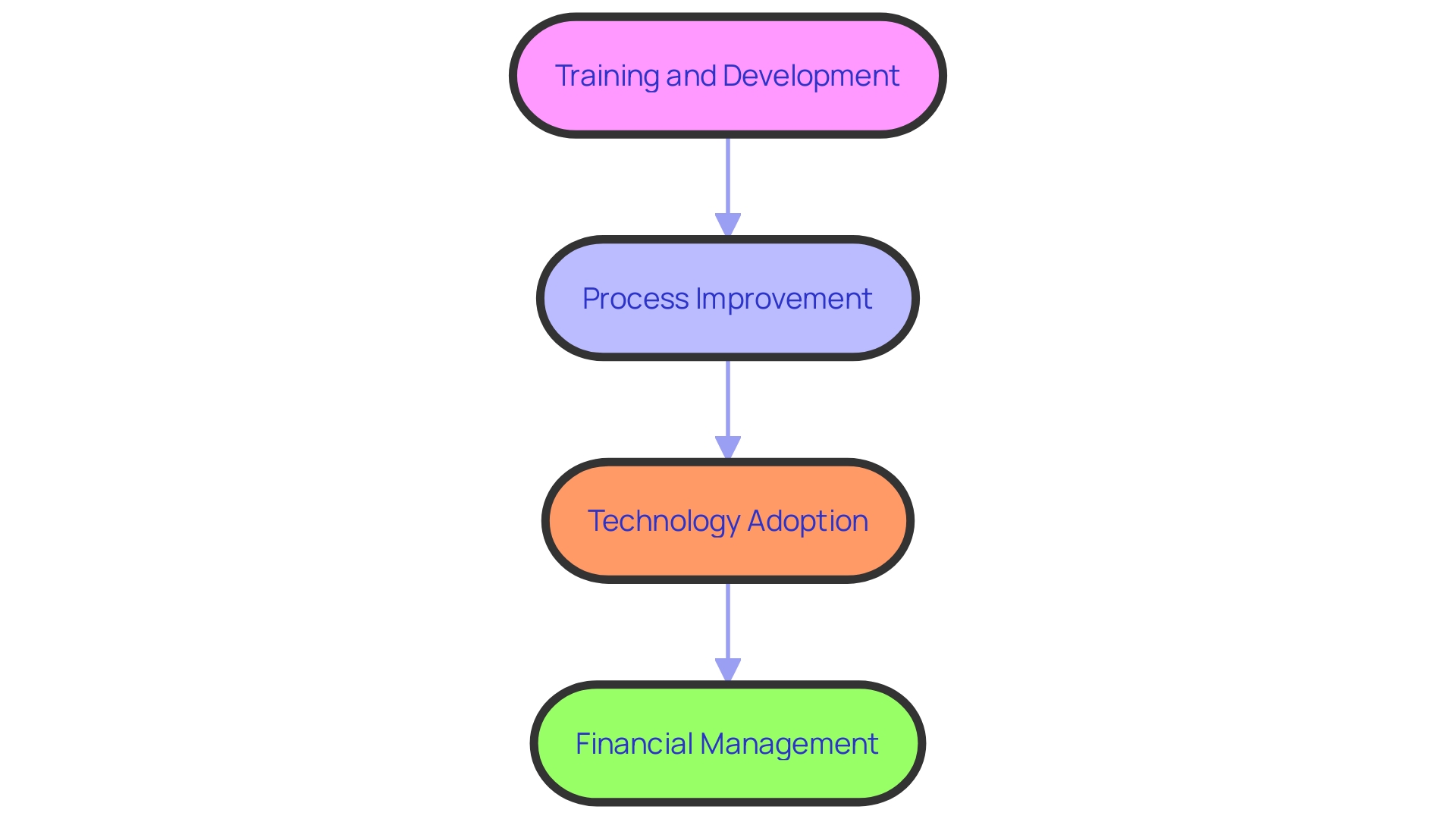
Leveraging External Opportunities to Offset Weaknesses
Converting areas of improvement into strong points is a dynamic procedure that frequently extends beyond the confines of an organization. Strategic alliances, for example, are a time-tested method for companies to synchronize their unique capabilities and resources, fostering a synergy that can effectively address internal shortcomings. By forming a formal agreement with one or more organizations, companies can maintain their autonomy while benefiting from shared objectives and resources like distribution channels, manufacturing capabilities, and expertise.
In scenarios where non-core activities become a burden, outsourcing emerges as a clever tactic. This allows an enterprise to focus on what it does best by delegating peripheral tasks to specialized service providers, optimizing both efficiency and quality.
Gaining insights into market dynamics through thorough research is another important approach. It reveals patterns that correspond to the strong points of a business and opens the path to address areas of improvement. For example, insights from market research can fuel customer-driven innovation, inviting customers to participate in the product development cycle, ensuring that offerings resonate with their needs and preferences.
These approaches, when implemented effectively, do not simply fix weaknesses; they convert them into chances for development and reimagining. An instance of this in action is the San Diego County's response to hiring difficulties. By deploying a three-pronged strategy, the county not only overcame its recruitment hurdles but also expanded its workforce to 20,000 employees.
Moreover, as the need for sustainable operations increases, companies struggle with industry-specific obstacles like decarbonizing supply chains. Collaborative efforts become indispensable in such situations, where individual efforts fall short. Enroll in the masterclass organized by WBCSD and BCG, which highlighted the significance of partnerships in addressing intricate issues such as emissions measurement and the adoption of decarbonization technologies.
In brief, capitalizing on external possibilities and collaborations is not only about addressing deficiencies; it's about strategically transforming them into competitive benefits, a principle echoed by specialists who support a 'Ruthlessly Constructive' approach to surmounting corporate challenges. With the right alliances and strategies, businesses can navigate their landscapes more effectively, ensuring long-term growth and success.
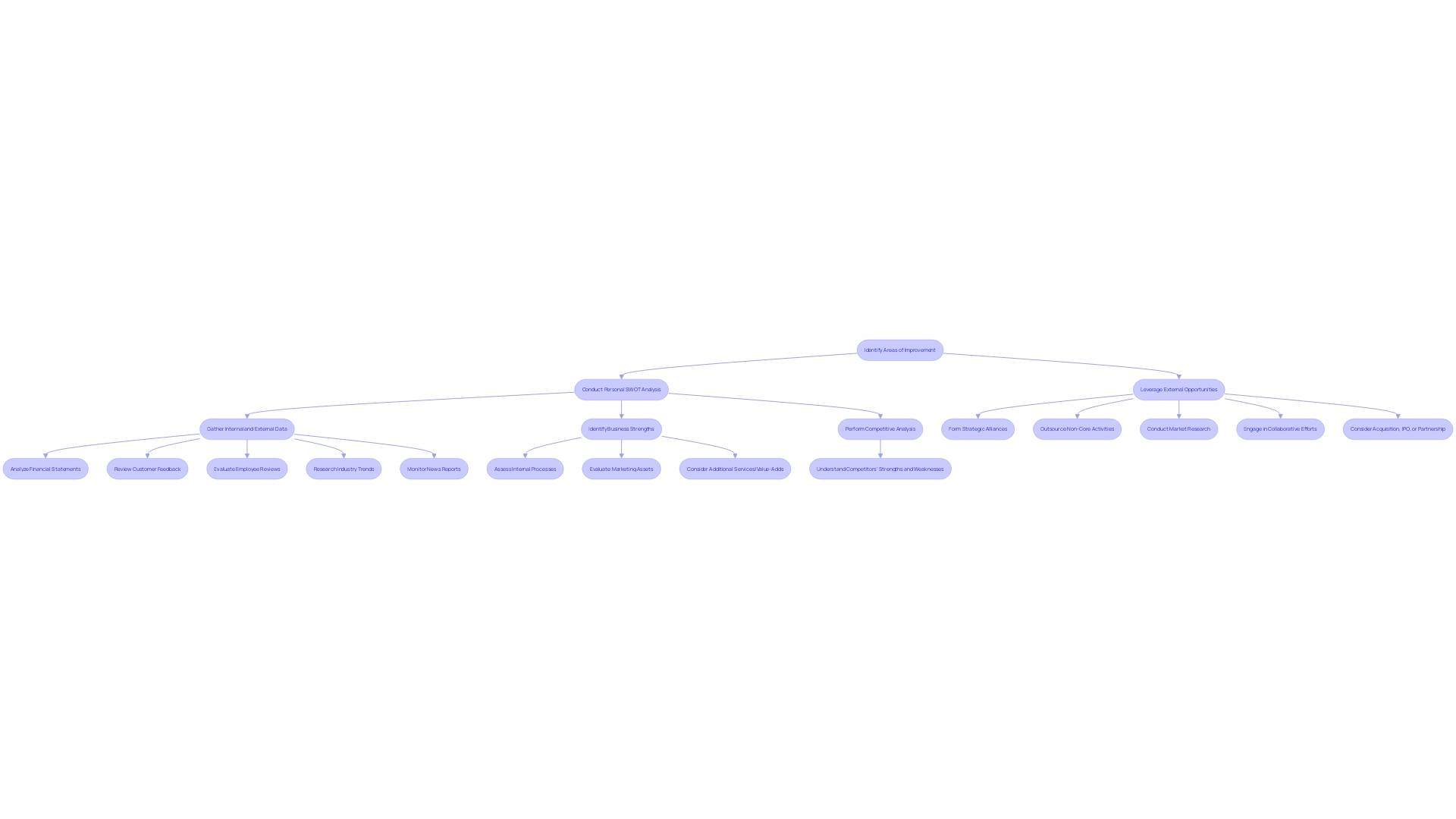
Creating an Action Plan to Address Weaknesses
Developing a thorough action plan is a crucial stage in turning identified limitations into strengths. Such a plan serves as a strategic blueprint, guiding organizations from their present situation towards their defined objectives. Here's how you might structure your action plan:
-
Prioritization is essential: Begin by evaluating which areas of improvement have the most significant adverse effect on your operations. By prioritizing these vulnerabilities, you ensure that resources are first allocated to areas that require immediate attention, such as enhancing digital accessibility by creating an accessibility statement, if that is an identified area of improvement.
-
Establish specific, measurable, achievable, relevant, and time-bound goals for each prioritized area of improvement. A precise goal, for instance, may involve enhancing your company's cybersecurity measures to mitigate the risk of data breaches, a prevalent issue that can have serious repercussions on customer trust and brand reputation.
-
Allocate the required resources, including the budget, time, and personnel, to execute the strategies devised to tackle the areas of improvement. Consider the example of the City of Thunder Bay, which utilized a grant to amplify its asset management planning, demonstrating the effective use of resources to engage both staff and the public.
-
Monitoring Progress: Keep a close eye on the advancement towards your goals. The use of artificial neural networks in machine learning, as highlighted by recent laureates of The Royal Swedish Academy of Sciences, demonstrates the power of regular monitoring and adjustment for continual improvement.
By meticulously following these steps, you create a focused and effective action plan that can foster progress and drive your business forward.
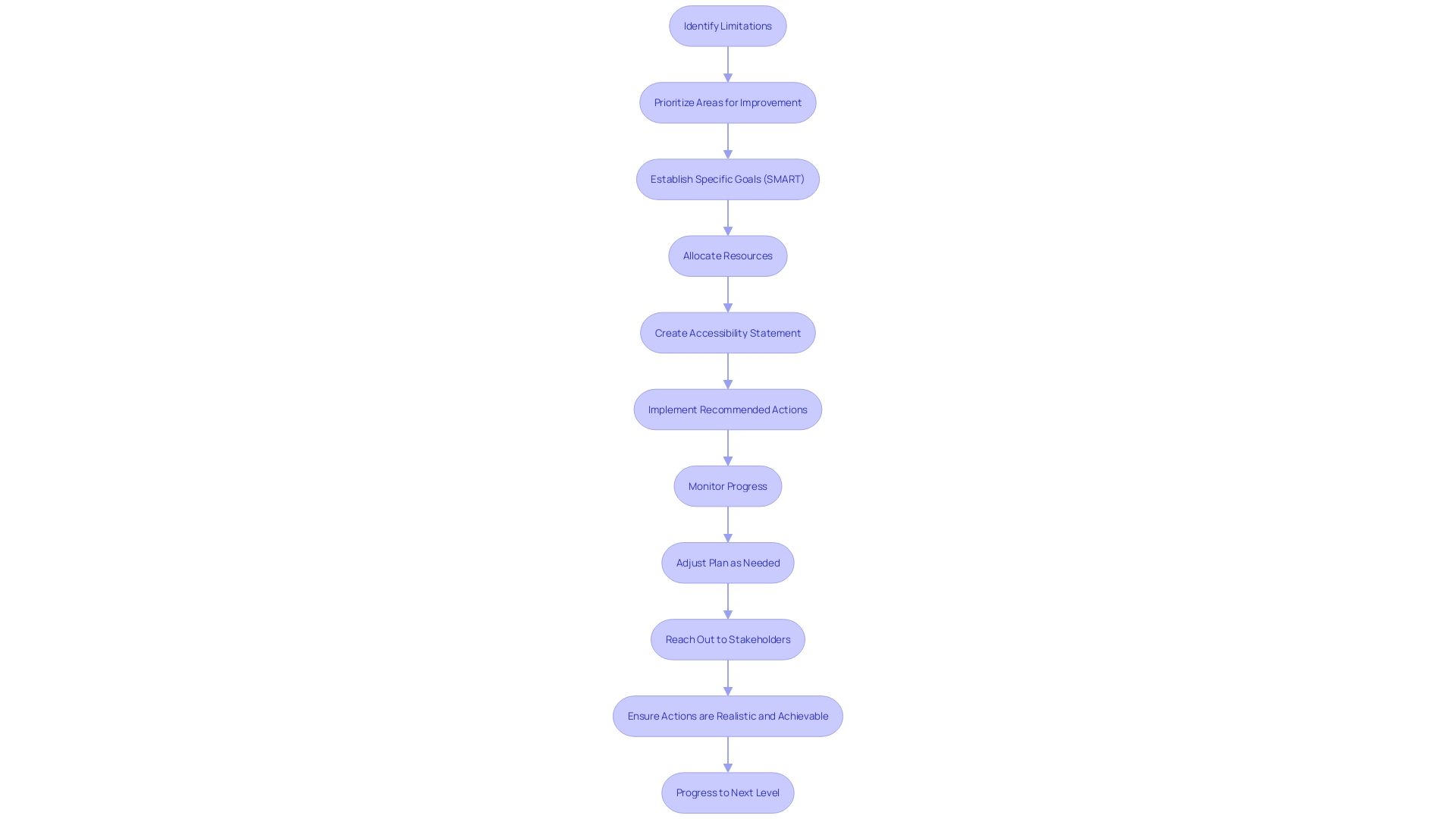
Common Pitfalls in SWOT Analysis and How to Avoid Them
To unlock the full potential of a SWOT analysis, it's pivotal to avoid common missteps that can undermine its effectiveness. First and foremost, maintaining objectivity is crucial; biases and preconceived notions have no place in this strategic exercise. Explore beneath the exterior to discover less apparent vulnerabilities that could go unnoticed during a superficial analysis. Equally important is the balanced assessment of strengths, weaknesses, and opportunities to ensure a comprehensive view. Ultimately, the genuine worth of SWOT analysis is recognized through careful execution of the plans it informs. For instance, TBC Bank's quest to deliver an exceptional digital banking experience illustrates the power of SWOT analysis when coupled with actionable strategies tailored to enhance both customer and employee satisfaction. Embracing a thorough and balanced SWOT analysis, supported by diligent data gathering, can pave the way for strategic decisions that bolster a company's market position and financial health.
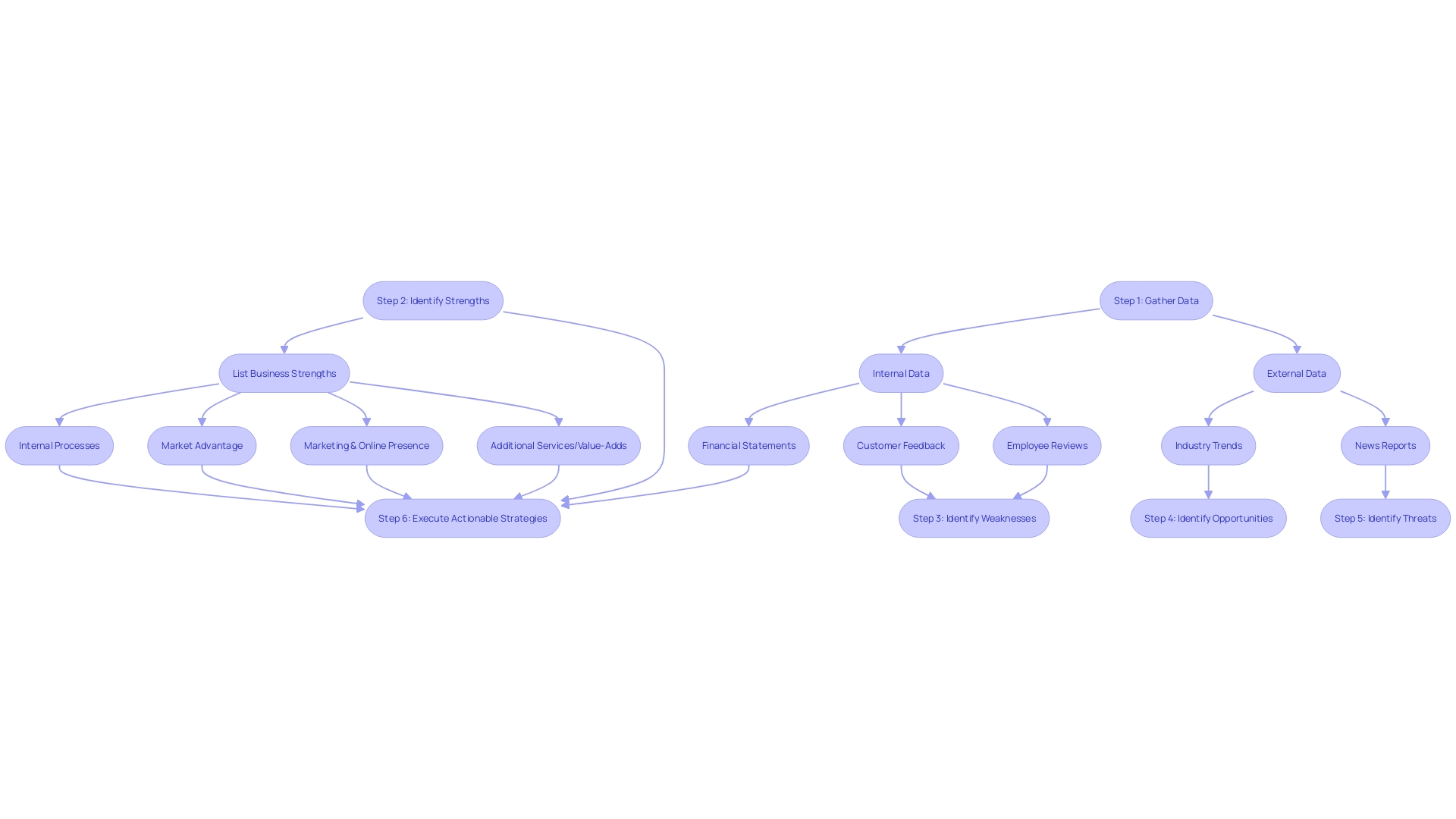
Conclusion
In conclusion, conducting a SWOT analysis is crucial for businesses to identify weaknesses and capitalize on opportunities. By recognizing weaknesses and addressing them, companies can navigate the business landscape with precision and foster growth and resilience.
Strategies such as internal audits, customer feedback, benchmarking, and employee input are effective in identifying weaknesses. Analyzing case studies and implementing industry-specific improvements can turn weaknesses into strengths.
Addressing weaknesses requires internal measures like training, process improvement, technology adoption, and financial management. Integrating these strategies helps rectify weaknesses and unlock growth and innovation.
Leveraging external opportunities, such as strategic alliances and market research, can offset weaknesses and fuel growth. Forming partnerships and understanding market dynamics enable companies to synchronize capabilities and drive customer-driven innovation.
Creating a comprehensive action plan is crucial for addressing weaknesses. Prioritizing weaknesses, setting SMART goals, allocating resources, and monitoring progress are key steps in driving progress.
To maximize the effectiveness of a SWOT analysis, businesses should avoid common pitfalls and implement informed strategies. A thorough and balanced SWOT analysis can lead to strategic decisions that strengthen a company's market position and financial health.
By following these insights, businesses can transform weaknesses into strengths and achieve long-term success. With a confident and action-oriented approach, companies can navigate the business landscape with precision, ensuring growth and resilience.




